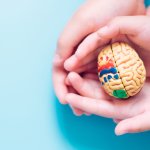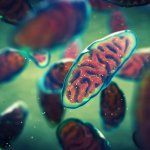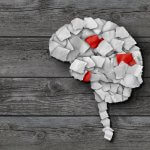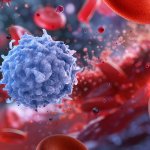A groundbreaking therapy based on transplanting mitochondria into blood stem cells has shown encouraging results in an ongoing, phase 2 trial. If successful, the therapy could not only treat rare, incurable diseases, but also potentially help reverse some of the effects of ageing.
What is mitochondrial dysfunction?
Mitochondria are tiny organs (organelles) found within cells, which work to produce the energy the cell needs to perform the rest of its functions. When they stop functioning correctly, the cells they are in are starved of energy, leading to a wide variety of potential issues depending on the cells affected.[1]
This dysfunction is the hallmark and cause of several diseases and conditions, collectively referred to as mitochondrial disease. These are complex diseases frequently involving multiple organs in the body; although they range in severity, many are ultimately fatal, and there are currently no treatments other than palliative care.[2][3] Many are early onset, developing in babies and young children.[4] This is the case for Pearson syndrome and Kearns-Sayre syndrome, the two conditions on which the therapy is currently being tested.[2][5]
In addition to these, mitochondrial dysfunction has also been linked to several other currently untreatable conditions, including neurodegenerative diseases such as Alzheimer’s[6], Parkinson’s[2] and amyotrophic lateral sclerosis[7], as well as cardiovascular diseases, chronic kidney disease, diabetes and more.[2]
How is this connected to ageing?
As we age, our bodies become less able to function well, and this includes the mitochondria. When they are working correctly, mitochondria produce limited quantities of Reactive Oxygen Species (ROS), which are unstable, highly reactive molecules containing oxygen. ROS are a normal byproduct of cellular metabolism, and play a role in helping cells communicate and remain balanced. Mitochondria that function poorly, however, produce excessive quantities of ROS, which can cause damage to various parts of the cell, including mitochondria. This leads to a vicious cycle where mitochondria functionality continues to worsen and ROS production continues to increase.[8][9][10] There is also evidence that inefficient energy production in mitochondria is what causes the loss of muscle mass and function in the elderly (sarcopenia).[11][12]
This growing body of research, combined with the connection between mitochondrial dysfunction and conditions which occur more frequently in the elderly, such as Alzheimer’s, suggests that treating mitochondrial dysfunction could slow, or even potentially reverse, the ageing process.[2][3][8][9]
How could a mitochondria transplant help?
The therapy, which has been in development for over a decade at Minovia, an Israeli company, hinges on extracting mitochondria from healthy cells from a donor. Scientists then take blood stem cells from the patient and enrich them with the healthy mitochondria. The enriched cells are then infused back into the patient’s bloodstream.[2][3]
The first generation of the therapy used mitochondria from white blood cells. The second generation currently being trialled uses mitochondria collected from the placenta; this is a young, healthy organ, which contains what has been described as ‘super mitochondria’.[3]
On young patients suffering from Pearson syndrome and Kearns-Sayre syndrome, the therapy is safe and has had marked improvements on physical development, energy, and quality of life.[3][5]
The research team believes that the same therapy could also help elderly patients suffering from mitochondrial dysfunction. A clinical trial for myelodysplastic syndrome, a rare type of blood cancer potentially linked to mitochondrial dysfunction, is ongoing.[13] The team is working on the development of biomarkers to test whether older patients are experiencing mitochondrial dysfunction, with an ultimate goal of trialling the therapy on elderly patients beginning in 2026.[3]
The power of the placenta
Although the placenta is frequently discarded as medical waste after birth, it is a valuable source of young, powerful cells. These could be the key to the treatment of diseases for which we currently have no cure. What’s more, they could prove to be invaluable for anti-aging treatments that could enable us to live longer, healthier lives. “We could,” says Dr Natalie Yivgi-Ohana, CEO and cofounder of Minovia, “find it to be the fountain of youth.”[3] To learn more about the placenta, and how you could preserve it for future use rather than discarding it, fill in the form below to request our free guide.
References
[2] Minovia. (2025). Mitochondrial Augmentation Technology (MAT). https://minoviatx.com/therapy/
FIND OUT MORE, REQUEST YOUR WELCOME PACK TODAY
All you need to know to make an informed decision.
Provide your contact details to request:
– Complete Welcome Pack and Parent’s Guide
– Information via email
– Contact from our specialist advisors








